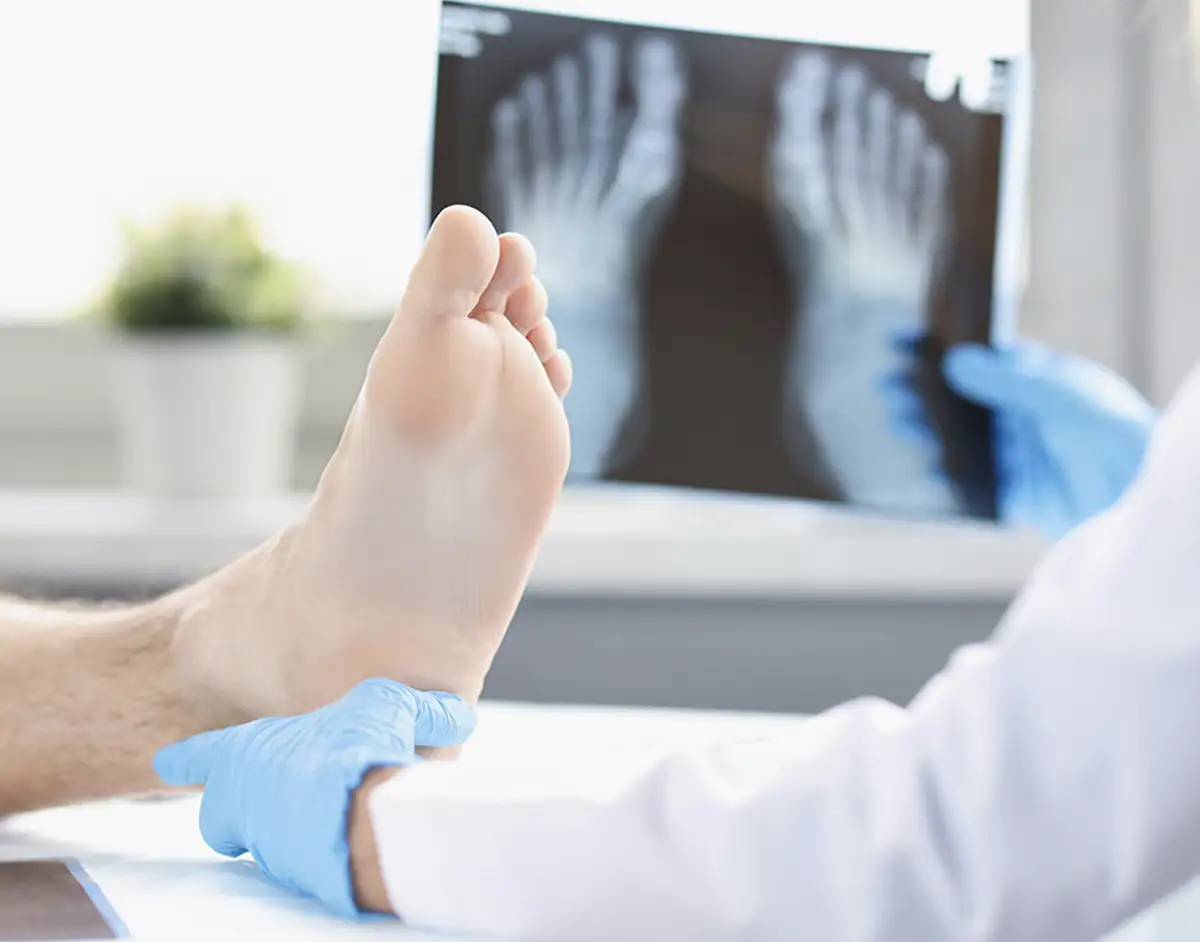Foot & Ankle Arthritis / Osteoarthritis
Arthritis occurs when the cartilage encasing the bones, which aids fluent movement in the joint, is damaged, resulting in friction. Any joint in the body can be affected by arthritis.
Osteoarthritis, rheumatoid arthritis, big toe arthritis (hallux rigidus), midfoot arthritis and hindfoot arthritis are just some of the varieties of arthritis affecting the foot and ankle.
QUICK LINKS
What causes ankle arthritis/osteoarthritis?
Some 70% of cases of foot and ankle arthritis are due to a previous injury. Other less common causes include rheumatoid arthritis, previous infection in the ankle joint, gout and rarely bleeding conditions such as haemophilia.
Ankle arthritis/osteoarthritis
Symptoms include:
- Experiencing pain on moving your ankle
- Your ankle joint swelling
- Finding your usual shoes too tight
- Pain worsening, even at rest
- Deformity of ankle joint, leading to limping
People suffering with arthritis have been known to leave it for years before consulting a doctor, by which time their stiffness has intensified, limiting movement. Treating the condition early, using techniques such as joint preservation surgery, can eliminate the need to undergo procedures like ankle fusion surgery.
Your consultant will discuss your symptoms with you at your first consultation and conduct a range of diagnostic tests, which may include an MRI scan or X-ray to pinpoint damaged areas of your ankle joint.
Ankle arthritis does not always lead to surgery and your consultant will recommend the best treatment path for your individual case. Sometimes, the wearing of a brace or specially-designed boots or shoes to support your ankle may be advised. This, together with anti-inflammatory painkillers (if prescribed), can control the pain effectively. However, your consultant may also advise you to have an injection in your ankle to keep swelling and pain down.
If, despite non-surgical intervention, the ankle pain is having a negative impact on your day-to-day activities, your consultant may opt to perform an arthroscopy (keyhole surgery) to repair any joint damage. Usually, regardless of how severe the arthritis is, the objective will be the preservation of your ankle joint. Joint preservation surgery to realign deformities in the ankle and ‘distract’ the joint (pull the damaged joint surfaces away from one another) may be necessary. An alternative procedure, should your joint be too damaged to preserve, is ankle fusion surgery, which results in your ankle joint being permanently stiffened.


Big toe arthritis or hallux rigidus
More frequent in the 30-50 age bracket, big toe arthritis may be the result of wear and tear/repetitive strain damaging the joint, but sometimes no clear cause can be pinpointed. People with big toe arthritis do, however, often suffer arthritis in other joints too.
Symptoms include:
- Joint pain and stiffness, particularly when bending the toe upwards
- A lump on the joint causing discomfort when wearing your shoes
- Pain when playing sport or walking
Your consultant will go through your symptoms with you at your first meeting and then normally do some diagnostic testing. An X-ray or an MRI scan may be necessary to assess any damage to the joint.
Early intervention is best because it gives the joint the best chance of preservation, whereas treatment at a later stage may mean big toe fusion surgery is necessary.
Big toe arthritis does not always require surgery and your consultant will recommend the right treatment for your condition. Sometimes, the wearing of specially designed insoles to remove pressure from your big toe joint, or shoes to support the toe while giving sufficient space in your shoe, will be advised. This, together anti-inflammatory painkillers (if prescribed), can control the pain effectively.
A severe bout of pain can be treated with injections into the big toe’s joint. Two commonly-used injections are: a PRP injection, in which platelet-rich plasma (PRP), a platelet concentrate of your own blood, is injected to reduce the inflammation and pain for prolonged periods of time; and HA (hyaluronic acid), a naturally-occurring acid, which helps keep the joint lubricated.
If, however, the lump formed on the joint means the toe is unable to bend upwards, it may be removed to control pain and improve mobility. This procedure, known as cheilectomy, is normally done as day case surgery. It may be that your consultant advises you to have big toe fusion surgery. This will stiffen the joint permanently but can reduce pain and allow you to wear your usual footwear again.









